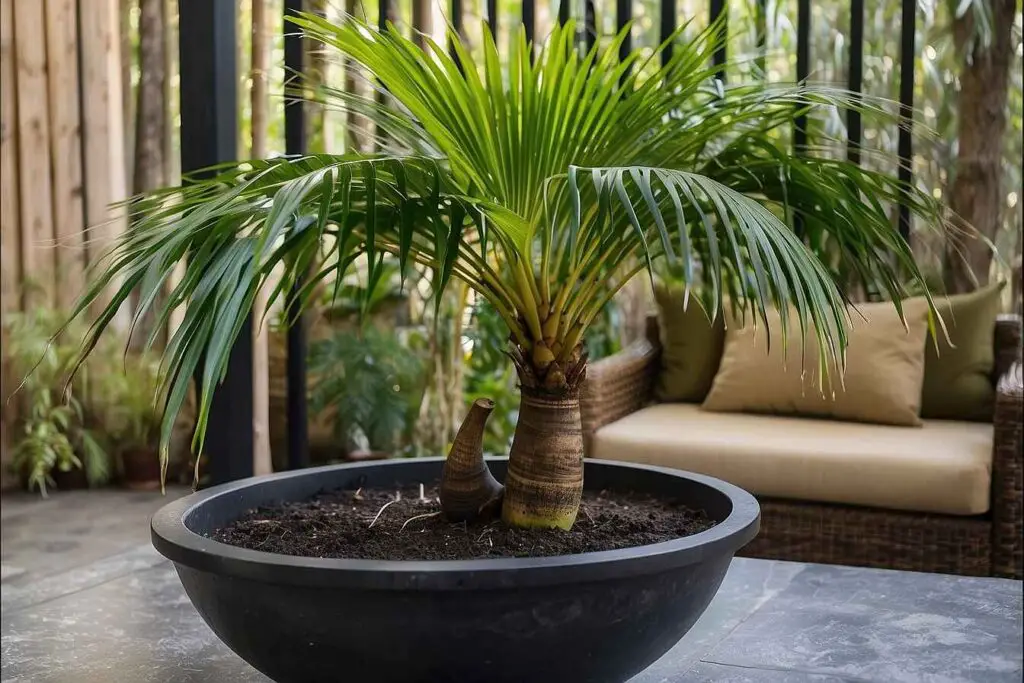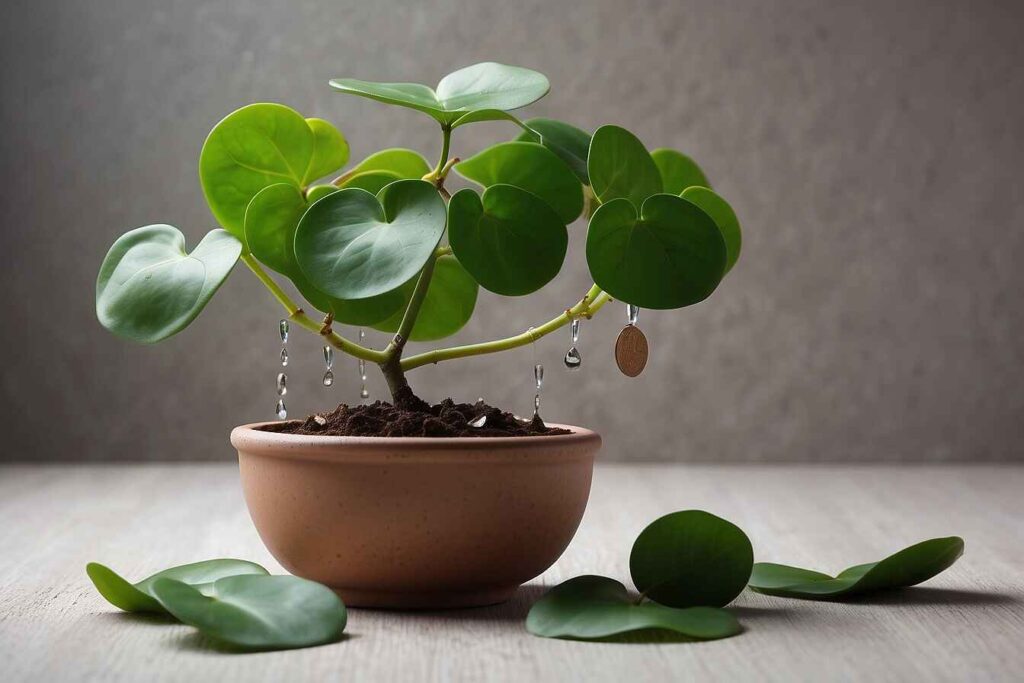Bamboo plants are beautiful, like art from nature. They can make any space feel calm and elegant. But like all plants, bamboo needs a little care to grow well. One key part of caring for bamboo is knowing when and how to replant it. In this guide, we’ll show you the steps to replant your bamboo so it keeps thriving in its new home.
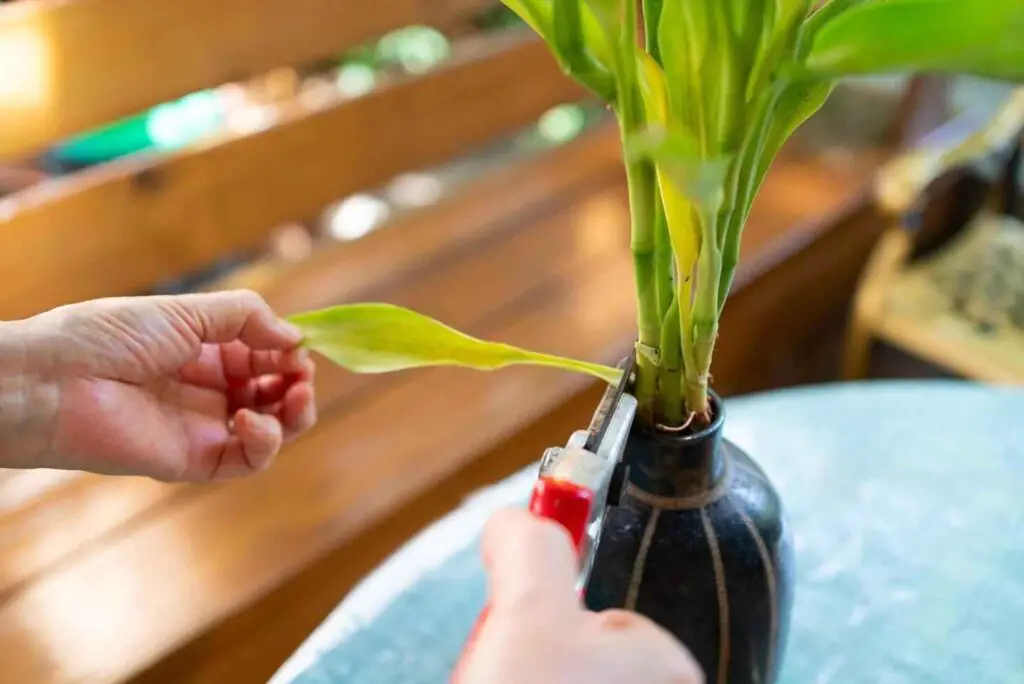
When to Repot a Bamboo Plant?
It’s important to know when to give your bamboo a new pot. Bamboos are low-maintenance plants, but they do have needs. You should consider repotting your bamboo when: .
- If you see your bamboo’s roots are growing out of the pot, it’s time to get a bigger one. Depending on the type of bamboo, you may need to repot it every 3-5 years.
- If your bamboo seems unhealthy even though you’re taking good care of it, a larger pot with fresh soil can help. Look for signs like yellow leaves, slow growth, or a lack of energy. These are signs it’s time to repot.
As for the best time to repot bamboo, you can do it anytime. Just be careful not to damage the plant during the process.
Preparations
Before you start repotting, check that you have all the things you need.
Choosing the Right Pot
When choosing a new pot for your bamboo, size is important. Pick a pot that’s about 2 inches wider than the current one. Choose pots with thick walls (made of concrete, wood, or clay) as they hold moisture better. This reduces stress on the plant compared to thin plastic pots.
Choosing the Right Potting Mix
Bamboos grow best in well-draining soil. A good mix is loamy, well-drained, and has organic matter. The soil should be slightly acidic, around 6.5 pH. We often suggest this Lucky Bamboo soil mix.
The tools you’ll need
- Newspaper or a plastic sheet
- A new pot
- Potting mix
- Stick or Screwdriver for loosening the roots
- Gardening gloves
- A watering can or spray bottle
How to Repot a Bamboo Plant Step-by-Step
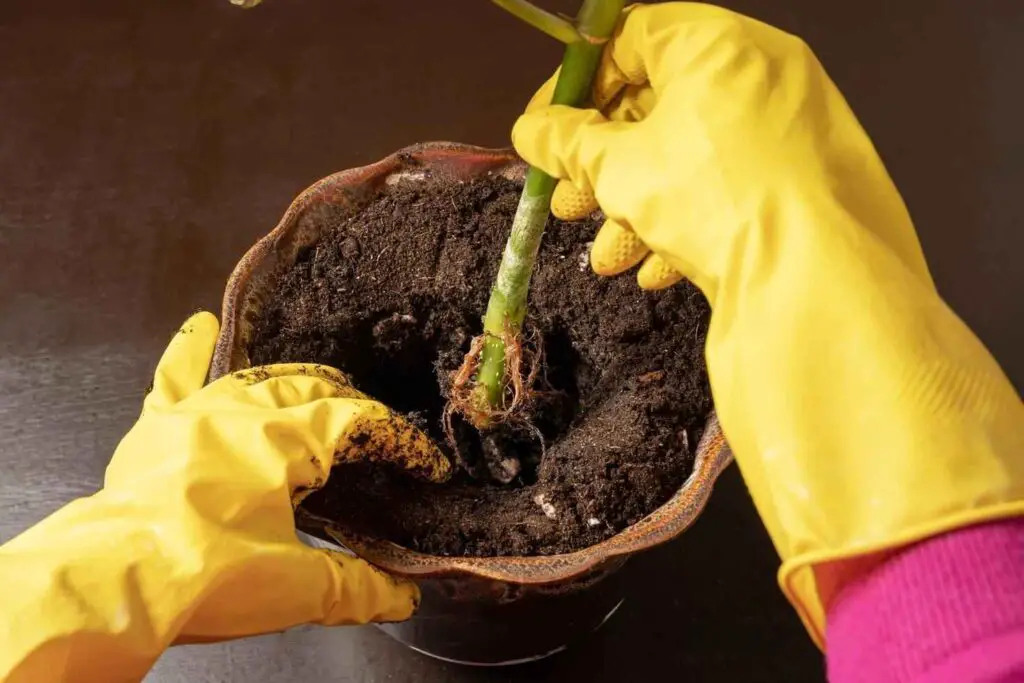
Step 1: Choose the Right Pot and Soil
Selecting the Pot
- The new pot should be larger than the current pot. The new pot should be about 2-3 inches wider in diameter. This extra space gives the bamboo’s roots room to grow.
- The pot needs good drainage holes. This stops water from building up, which can make the plant’s roots rot.
Choosing the Soil
- Use soil that drains well. A mix made for bamboo or other indoor plants is best. This soil has the right nutrients and drainage for bamboo.
- Adding compost or organic matter to the soil helps the bamboo grow and stay healthy. This provides extra nutrients for the bamboo.
Step 2: Prepare the New Pot
- Placing a layer of gravel or small stones at the bottom of the new pot helps improve drainage. This prevents water from collecting at the bottom. Water accumulation can cause root rot.
- Fill the pot with soil mix. Don’t fill the pot all the way. Leave space for the bamboo plant. The top of the root should be 1-2 inches below the pot’s rim when placed inside.
Step 3: Remove the Bamboo Plant from its Current Pot
Water the Plant
- Water the bamboo plant a day before repotting. This softens the soil. It makes it easier to remove the plant without harming the roots.
Gently Remove the Plant
- Tilt the pot and tap the sides. This loosens the soil. This will help the roots come free from the pot’s edges.
- Take out the plant carefully. Hold the base of the stems to slide the plant out. Don’t pull on the stems or leaves. This will prevent damage to the plant.
Step 4: Examine and Trim the Roots
Inspect the Roots
- Closely look at the roots. Check for any signs of disease or rotting. Healthy roots should feel firm. They should be white or light tan in color.
Trim if Necessary
- Pruning means trimming long, messy roots. This makes the plant grow a stronger, healthier root system.
- Cut off any damaged roots. Use clean, sharp scissors or pruning shears to remove dead, mushy or sick roots. This will stop the disease from spreading and help the plant grow stronger.
Step 5: Place the Bamboo in the New Pot
Position the Plant
- Centering the bamboo plant is important. Place the plant in the middle of the new pot. Make sure it stands straight and is stable.
Add Soil
- Add the soil mix around the plant. Add the soil slowly and press gently to remove air pockets that could harm the roots.
- When replanting bamboo, keep the soil at the same level as the old pot. The top of the roots should be 1-2 inches below the pot rim. This helps with watering and stops soil from spilling out.
Step 6: Water and Care for Your Repotted Bamboo
Water Thoroughly
- After repotting, water the bamboo plant completely. This will help the soil settle around the roots. Water should flow out of the drainage holes. This shows the plant is fully watered.
Placement and Care
- Bamboo needs the right light conditions. Place the pot where it gets indirect sunlight. Avoid direct, harsh sunlight as it can damage the leaves.
- Watering is important for bamboo. Keep the soil moist but not too wet. Check the soil often and water as needed to keep it evenly moist.
- Watch the plant closely for signs of stress, like yellow leaves or drooping. Based on what you see, adjust how you care for the plant. This could mean changing the watering, moving it to a better spot, or checking for pests or diseases.
Aftercare
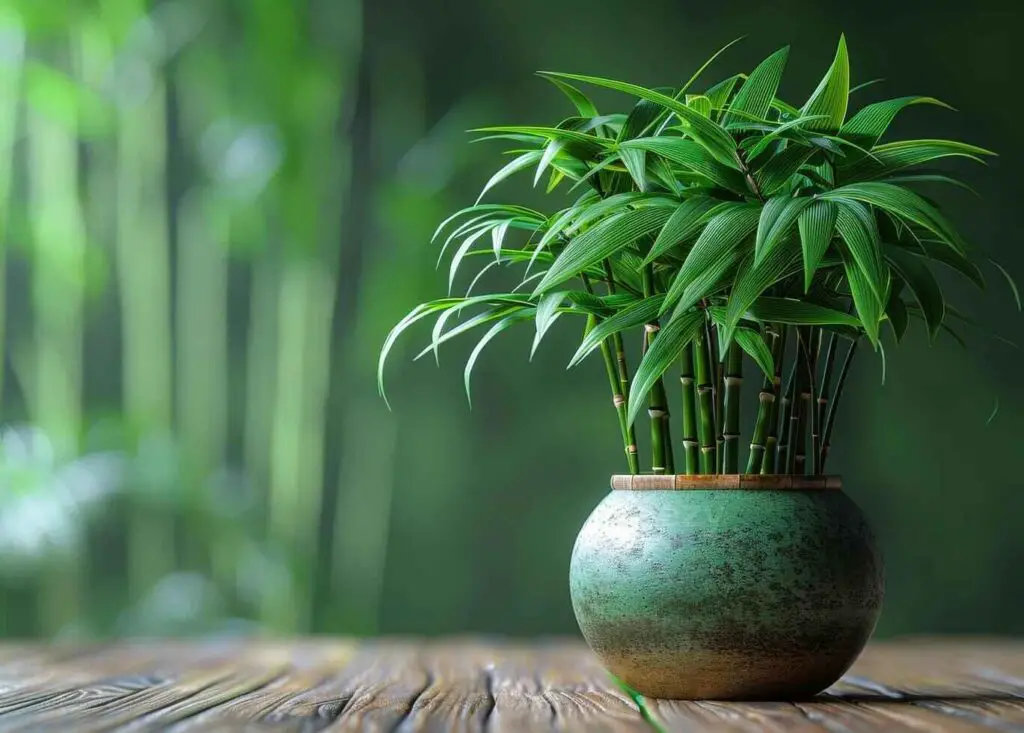
- Place your bamboo in an area with bright, indirect sunlight. Don’t put it in direct sunlight, as it can damage the leaves. Bamboos can adapt to different conditions but work best with consistent, moderate lighting.
- Keep the soil moist but not too wet. Water when the top inch of soil feels dry. Don’t let the pot sit in standing water, as this can cause root rot.
- To help your bamboo grow, feed it with a liquid fertilizer every 2-4 weeks in spring and early summer. Use a grass or lawn fertilizer high in nitrogen. This will give your bamboo the nutrients it needs.
- If your bamboo grows tall, you may need support to prevent it from falling over. You can use bamboo stakes or decorative supports to help hold up the bamboo.
Bamboo is a symbol of strength and flexibility. With the right care and love, your bamboo plant will keep thriving. It will bring peace to your space for a long time. Enjoy your gardening!
You may be interested in reading how to propagate majesty palm
